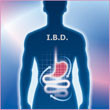A review of efficacy and safety data for subsequent entry biologics (SEBs) used in nephrology practice in Canada has found little clinical difference between epoetin SEBs and the reference product. But while the clinical differences are minimal, argue the authors, the financial implications of a possible dose difference between epoetin zeta and the reference product should be considered in future pharmacoeconomic studies [1].
Equivalent safety and efficacy of nephrology subsequent entry biologics in Canada
Biosimilars/Research
|
Posted 13/03/2015
 0
Post your comment
0
Post your comment

This latest study by Daniel Martinusen of the British Columbia Provincial Renal Agency & Royal Jubilee Hospital, Island Health Authority, Vancouver, Canada, and co-authors, follows a review of the potential impact of subsequent entry biologics (SEBs) in nephrology practice in Canada [2].
Martinusen’s team has reviewed clinical trial data, safety data, case reports and review articles for SEBs in nephrology practice. Although SEBs exist for epoetin, darbepoetin, rituximab and tissue plasminogen activator (tPA), 10 studies of only three different epoetin SEBs were included since only epoetin SEBs trials are currently available in the literature. This limited data pool naturally limits the analysis in the study.
Reviews of SEB trials like this are important because SEBs are likely to enter Canadian nephrology practice shortly [2]. Carefully weighing up the data in this way will allow nephrology teams to make decisions on the safe and effective use of these medicines.
Relevant literature was gathered on Ovid MEDLINE and EMBASE using the search terms ‘biosimilar pharmaceuticals’, ‘subsequent entry biologics’ or ‘follow on biologics’ for each drug of interest. The same search terms were used with the Cochrane Database of Systematic Reviews; Database of Abstracts and Review of Effects; and the Cochrane Central Register of Controlled Trials.
The literature review showed up no relevant differences in efficacy between epoetin zeta, HX575 and epoetin theta – the currently available SEB epoetins – and the reference erythropoiesis-stimulating agent (ESA). But one study, which accounted for just under half of the weighted pooled data, did not allow enough time for dose titration to achieve steady state in a crossover design.
Alongside this, the authors of that study claimed there was higher protein content due to overfilling with epoetin alfa, 9% over the labelled amount of protein, compared with about 1% with epoetin zeta. ‘The financial implication of a possible dose difference can be large when summed over populations and over years and should be considered by those who negotiate contracts for payers,’ write Martinusen and co-authors.
Alongside the absence of clinically important differences in efficacy between currently available epoetin SEBs and the reference ESA. There was no evidence of an increased risk of pure red cell aplasia (PRCA) or adverse reactions. However, evidence of a higher dose requirement for epoetin zeta to achieve target haemoglobin will need further study, and pharmacoeconomic studies will need to be conducted before considering the full financial implications.
Finally, the authors conclude, post-marketing surveillance will be essential in order to estimate PRCA frequency more precisely. In this way, the overall adverse reaction profile of all epoetin SEBs in clinical practice can properly be established.
Editor’s comment
Readers interested to learn more about the approaches to interchangeability and the extrapolation of indications and uses in Canada are invited to visit www.gabi-journal.net to view the following manuscripts published in GaBI Journal:
Readers interested in contributing a research or perspective paper to GaBI Journal – an independent, peer reviewed academic journal platform – please send us your submission here.
Related article
Subsequent entry biologics approved in Canada
References
1. Marin, et al. Efficacy and safety data of subsequent entry biologics pertinent to nephrology practice: a systematic review. Canadian Journal of Kidney Health and Disease. 2014;1:34. doi:10.1186/s40697-014-0034-5
2. GaBI Online - Generics and Biosimilars Initiative. Impact of nephrology subsequent entry biologics in Canada fails [www.gabionline.net]. Mol, Belgium: Pro Pharma Communications International; [cited 2015 Mar 13]. Available from: www.gabionline.net/Biosimilars/Research/Impact-of-nephrology-subsequent-entry-biologics-in-Canada
Permission granted to reproduce for personal and non-commercial use only. All other reproduction, copy or reprinting of all or part of any ‘Content’ found on this website is strictly prohibited without the prior consent of the publisher. Contact the publisher to obtain permission before redistributing.
Copyright – Unless otherwise stated all contents of this website are © 2015 Pro Pharma Communications International. All Rights Reserved.
News
First denosumab biosimilars approved in Canada and the US
Dr Reddy's launches bevacizumab biosimilar Versavo in the UK
General
Brazil advances in follow-on biologicals/biosimilars approvals, trailing Europe
Insurer perspective on increasing biosimilar uptake in Canada
Most viewed articles
The best selling biotechnology drugs of 2008: the next biosimilars targets
Global biosimilars guideline development – EGA’s perspective
Related content
Comparing biosimilar adoption: Medicare Advantage versus traditional Medicare
Questioning the need for ethnic sensitivity assessments for biosimilar monoclonal antibodies
ANVISA's role in biosimilar medicine regulation and innovation promotion
Infliximab discontinuation in patients with originator retransition vs biosimilar continuation
Comparing biosimilar adoption: Medicare Advantage versus traditional Medicare

Biosimilars/Research Posted 03/04/2024
Questioning the need for ethnic sensitivity assessments for biosimilar monoclonal antibodies

Biosimilars/Research Posted 27/03/2024
ANVISA's role in biosimilar medicine regulation and innovation promotion

Biosimilars/Research Posted 22/03/2024
Infliximab discontinuation in patients with originator retransition vs biosimilar continuation

Biosimilars/Research Posted 07/03/2024
The best selling biotechnology drugs of 2008: the next biosimilars targets






Post your comment